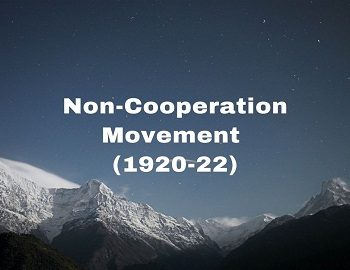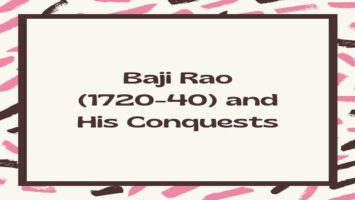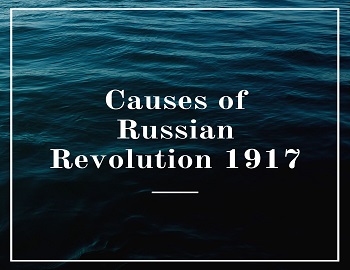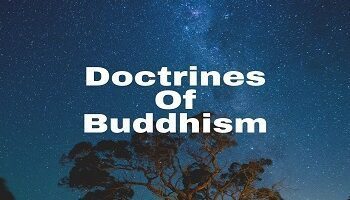Table of Contents
Factors Responsible For Non-Cooperation Movement:
- Nature of British rule in India.
- Contribution of previous efforts like Home Rule Movement.
- Wrong of 1919 like–
- The Rowlatt Act.
- The Jallianwala Bagh Massacre exposed the ugly face of a repressive government. This forced Mahatma Gandhi to go from cooperation to non-cooperation.
- Martial law in Punjab.
- Hunter Commission whitewash further fuelled the frustration of Indians.
- The ‘dyarchy’ provision of the Government of India Act, 1919.
- The Khilafat issue.
Main Demands of Non-Cooperation Movement:
- The Khilafat issue.
- The redressal of the Punjab wrongs.
- The attainment of Swaraj (self-rule or self-government).
Programme of the Non-Cooperation Movement:
Destructive Programme:
- Surrender of titles and honorary positions.
- Resignation of membership from the local bodies.
- Refusal to attend official and non-official functions.
- Boycott of courts, government schools and colleges.
- Boycott of elections held under the provisions of the 1919 Act.
- Boycott of foreign goods.
- Mass civil disobedience which would include the non-payment of taxes.
Constructive Programme:
- Promotion of Hindu-Muslim unity.
- Setting up of arbitration boards to take the place of courts.
- Founding of national schools and colleges, where students leaving government schools and colleges might continue their education.
- Removal of Untouchability.
- Promotion of Swadeshi.
- Popularization of Charkha and Khadi.
- To collect one crore rupees for the Tilak Memorial Swarajya Fund.
- To introduce 20 lakh charkhas into Indian households.
Progress of the Movement:
The famous doctrine of non-violence non-cooperation movement which Gandhiji had issued in March 1920 was formally launched on August 1, 1920. Tilak died on the same day. His last message to the nation was ‘Unless Swaraj is achieved, India shall not prosper. It is required for our existence’.
Students:
After the launch of the movement, Gandhi along with the Ali brothers undertook a nation-wide tour. More than ninety thousand students left their schools and joined national educational institutions that were established during this period. It is estimated that about 800 educational institutions were established during this period under the leadership of Acharya Narendra Dev, Zakir Hussain, Lala Lajpat Rai, Subash Chandra Bose, and C.R.Das. Some of the educational institutions established during this period include Jamia Milia, Kashi Vidyapith, Bihar Vidyapith, and Gujarat Vidyapith.
Lawyers:
The Non-cooperation also saw the participation of lawyers on a large scale. Many lawyers gave up their flourishing practice and joined the national movement. Some of the national leaders such as Motilal Nehru, Jawahar Lal Nehru, Asaf Ali, T.Prakasham, and Rajendra Prasad gave up their practice included.
Boycott:
The boycott of foreign clothes was the most successful programme of the Non-cooperation Movement. Clothes and other foreign (mainly English) goods were collected and burnt in public. Picketing of toddy shops also became very popular which led to the decline of Government revenues.
Vijayawada Session (1921):
The congress at its Vijayawada Session in March 1921, called party workers to concentrate on collecting funds, enrolling new members, and distributing charkha. The membership of Congress during the period reached more than 50 lakhs. Charkha became very popular and khadi became the uniform of the national movement.
Prince of Wales (November 1921):
When the Prince of Wales landed in Bombay on November 17, 1921, he was welcomed with a nation-wide hartal.
Non-Cooperation in Rural Areas:
The movement spread from cities to rural areas and included peasant’s tribal areas as well.
In Awadh, peasants were led by Baba Ramchandra:
A sanyasi who had earlier been to Fiji as an indentured labourer. The movement here was against talukdars and landlords who demanded from peasants exorbitantly high rents and a variety of other cesses. Peasants had to do begar and work at landlords’ farms without any payment. As tenants they had no security of tenure, being regularly evicted so that they could acquire no right over the leased land. The peasant movement demanded a reduction of revenue, the abolition of begar, and a social boycott of oppressive landlords. The peasant movement, however, developed in forms that the Congress leadership was unhappy with. As the movement spread in 1921, the houses of talukdars and merchants were attacked, bazaars were looted, and grain hoards were taken over. In many places, local leaders told peasants that Gandhiji had declared that no taxes were to be paid and the land was to be redistributed among the poor. The name of the Mahatma was being invoked to sanction all actions and aspirations. In many places ‘nai –dhobi bandhs‘ were organized by panchayats to deprive landlords of the services of even barbers and washermen.
Gudem Hill’ Tribe War, or Koya Rebellionor Rampa Rebellion 1922:
Tribal peasants interpreted the message of Mahatma Gandhi and the idea of swaraj in yet another way. In the ‘Gudem Hills’ of Andhra Pradesh, for instance, a militant guerrilla movement spread in the early 1920s –not a form of struggle that the Congress could approve. Here, as in other forest regions, the colonial government had closed large forest areas, preventing people from entering the forests to graze their cattle, or to collect fuelwood and fruits. This enraged the hill people. Not only were their livelihoods affected but they felt that their traditional rights were being denied. When the government began forcing them to contribute begar for road building, the hill people revolted. The person who came to lead them was ‘Alluri Sitaram Raju’. But at the same time, he asserted that India could be liberated only by the use of force, not non-violence. The Gudem rebels attacked police stations, attempted to kill British officials, and carried on guerrilla warfare for achieving swaraj. Raju was captured and executed in 1924, and over time became a folk hero.
Idea of Swaraj of Plantation Workers:
Workers too had their own understanding of Mahatma Gandhi and the notion of swaraj. For plantation workers in Assam, freedom meant the right to move freely in and out of the confined space in which they were enclosed, and it meant retaining a link with the village from which they had come. Under the Inland Emigration Act of 1859, plantation workers were not permitted to leave the tea gardens without permission, and in fact, they were rarely given such permission. When they heard of the Non-Cooperation Movement, thousands of workers defied the authorities, left the plantations, and headed home. They believed that Gandhi Raj was coming and everyone would be given land in their own villages. They, however, never reached their destination. Stranded on the way by a railway and steamer strike, they were caught by the police and brutally beaten up.
Eka Movement:
Towards the end of 1921, peasant discontent surfaced again after earlier Kisan Sabha movements in the districts of Hardoi, Bahraich, and Sitapur of United Provinces with grievances relating to the extraction of a rent that was generally 50 percent higher than the recorded rent. Madari Pasi from the depressed class and one of the key leaders who gave the movement direction opposing the non-violence methods and called for violent struggle.
Tana Bhagat Movement:
Just like Birsa’s religious movement among the Mundas, a similar religious movement gained among the Oraon of Chotanagpur, Bihar known as Tana Bhagat. The movement aimed against the missionaries and British colonialists during Non-Cooperation also they participated and they boycotted liquor.
Akali Fight in Punjab:
The Akali fight in Punjab against the corrupt Mahants and British officials over the Sikh Gurudwaras (Shrines) was part of the Non-cooperation Movement. The Mahants massacred more than a hundred Akalis on February 20, 1921; this is known as the Nankana Tragedy. In November 1921, the British officials refused to hand over the keys of the Golden Temple treasury to the Akalis. Thousands of Sikhs joined the Akalis and forced the British to hand over the keys and released the prisoners by mid-January 1922. The Akali struggle, however, continued till the Sikh Gurudwaras and Shrines Act of November 1925 established Shiromani Gurudwara Prabandhak Committees (SGPC) control over the Gurudwaras.
The Government declared the Congress and Khilafat Volunteer organizations illegal. Nearly 30,000 persons courted arrest within a year of the launching of the movement. C.R.Das was among the first to be arrested, followed by Motilal Nehru and Jawahar Lal Nehru.
After the annual session of the INC at Ahmedabad in December 1921, Mahatma Gandhi sent a written ultimatum to the Viceroy threatening ‘Mass Civil Disobedience‘ if the Viceroy did not decide to reverse the Government’s repressive policies within seven days.
Chauri Chaura Incident and Decline of the Non-Cooperation Movement:
Before the week elapsed, an incident took place at Chauri Chaura, a small village in the Gorakhpur district of Uttar Pradesh. On February 4, 1922, a large group of protestors was fired upon by the policemen stationed at Chauri Chaura. This infuriated the demonstrators who then set fire to the police station. Twenty-two policemen were charred to death.
The Chauri Chaura incident convinced Mahatam Gandhi that the country was not yet ready for mass civil disobedience. He prevailed upon the Congress Working Committee, which met at Bardoli on February 12, 1922, to call off the movement.
Many Congress leaders including Subhash Chandra Bose, Nehru were in disbelief over this decision of Gandhi. ‘For a sin of handful people down in the Himalayas, the entire nation has been brought down to its knees’ –SC Bose said on withdrawal of Non-Cooperation. However, Gandhi was aware that in the event of violence and a direct confrontation with the British, Indians are a no match to British power and they will be crushed brutally. Incidents like Chaura-Chauri would have led to a direct confrontation and ultimately loss to Indians.
The British Government, realizing that Mahatma Gandhi’s position had been weakened on account of his suddenly calling off the movement, arrested him in March 1922 and he was sentenced to six years of imprisonment.
Impact of the Non-Cooperation Movement:
The suspension of the Non-cooperation Movement left many issues unsolved. The Khilafat question had not been settled. Nor had the Punjab atrocities been redressed. Against these factors, the Non-cooperation Movement when viewed appears to be a failure. Yet the far-reaching consequences of this movement outweighed its failure. Some of the benefits of the Non-cooperation were-
- The Non-cooperation Movement was the first mass movement as it encompassed many sections of Indian peasants, workers, artisans, shopkeepers, students, traders, and professionals.
- The unity between the Hindus and the Muslims could be seen in the merger of the Khilafat issue with this movement. The overwhelming participation of the Muslims in the movement and the demonstration of communal unity was an achievement in itself.
- Though the movement failed to achieve Swaraj, it generated a feeling of freedom among the masses and inspired them to meet the forces of repression unleashed by the Government. Even Lajpat Rai who did not fully agree with Gandhi’s political ideas observed that the passive resistance in India was an ‘achievement unique in our history, may even in the history of the world. It has raised the political consciousness of the country by one big leap…’
- This movement made people realize that the Indian National Congress was the only organization to lead India to freedom. Further, though its non-violent method, it generated the full sympathy and support of the masses.
The movement’s social impact was best reflected in:
- Boycott of foreign goods that gave impetus to the indigenous industries.
- Khadi and Charkha became symbols of the national movement.
- The movement created awareness about social evils like untouchability and drinking.









Comments (No)